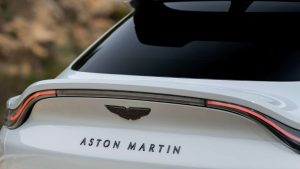How do Nvidia shares measure up as a GARP investment?


Breakneck earnings growth has driven Nvidia (NASDAQ:NVDA) shares spectacularly higher in recent times. At $125.73 per share, the semiconductor maker has soared 432% in value during the past two years.
Nvidia has its fingers in many pies, from artificial intelligence (AI) and gaming to robotics and cloud computing. And City analysts are expecting profits to continue soaring over the near term as the digital revolution rolls on.
Having said that, those stratospheric price gains lead me to question whether Nvidia shares could still be an attractive GARP (growth at a reasonable price) investment.
Here’s what I’ve found.
Test #1
Growth shares — and particularly those in the technology arena — tend to command sky-high price-to-earnings (P/E) ratios. These high valuations reflect the premium that investors are willing to pay for companies with electrifying profits potential.
The GARP strategy, on the other hand, seeks to balance growth and value by applying the the P/E-to-growth (PEG) ratio. It’s a method that helps investors avoids the danger of buying overhyped, overpriced stocks.
As a GARP investor, I’m seeking a reading of one or below. Here’s how Nvidia shares stack up:
| 2026 | 2027 | |
|---|---|---|
| Earnings per share (EPS) growth | 49% | 24% |
| P/E ratio | 29.9 | 24 |
| PEG ratio | 0.6 | 1 |
Brokers expect EPS growth to slow considerably from the 147% rise recorded in the last financial year (ending January 2025). But the company’s expected growth trajectory still leaves it trading on attractive PEG ratios of 1 or below for the period.
Test #2
Things look good so far, then, but I’m not finished yet. I also think it’s worth comparing how Nvidia’s share price compares with those of other semiconductor stocks.
Here’s what I found, based on expected earnings for their current financial years:
| Company | P/E ratio | PEG ratio |
|---|---|---|
| Advanced Micro Devices (AMD) | 22.6 | 0.1 |
| Intel | 44.8 | N/A |
| Broadcom | 34 | 0.1 |
| Taiwan Semiconductor Manufacturing Company (TSMC) |
17.2 | 0.5 |
| Qualcomm | 13.8 | 0.5 |
As you can see, four out of the five carry lower PEGs than Nvidia. Intel is the only exception: it recorded losses per share last year, resulting in an invalid multiple.
The verdict
So there we are. On paper, Nvidia shares look like a good investment from a GARP viewpoint, although its PEG isn’t quite as attractive as its major industry rivals.
But could the business be worthy of this premium? I think it might.
Nvidia’s high-power graphics processing units (GPU) make the firm the go-to chip supplier for AI applications. With the market growing at stunning speed, the company is in the box seat to capitalise.
Full-year financials released Wednesday (26 February) underline the progress it continues to make. Revenues soared 114% in financial 2025, to $130.5bn. This was driven by a 142% sales rise at its Data Center, whose products power AI and cloud computing.
This reflected in large part huge demand for its Blackwell AI chips.
Past performance is not always a reliable guide to the future, however. And Nvidia faces several large challenges looking ahead.
Its rivals are investing heavily in their own AI capabilities to grab market share. The emergence of DeepSeek’s efficient AI model poses another danger, as it could potentially reduce demand for high-power GPUs.
But encouraged by Nvidia’s strong record of innovation, I’m optimistic earnings will continue to rip higher. I think the chipmaker’s a top GARP investment to consider.
The post How do Nvidia shares measure up as a GARP investment? appeared first on The Motley Fool UK.
Should you buy Nvidia now?
Don’t make any big decisions yet.
Because Mark Rogers — The Motley Fool UK’s Director of Investing — has revealed 5 Shares for the Future of Energy.
And he believes they could bring spectacular returns over the next decade.
Since the war in Ukraine, nations everywhere are scrambling for energy independence,
he says. Meanwhile, they’re hellbent on achieving net zero emissions.
No guarantees, but history shows…
When such enormous changes hit a big industry, informed investors can potentially get rich.
So, with his new report, Mark’s aiming to put more investors in this enviable position.
Click the button below to find out how you can get your hands on the full report now, and as a thank you for your interest, we’ll send you one of the five picks — absolutely free!
More reading
- Here’s how much £500 put into Nvidia stock a year ago is worth today
- The US stock market extends its losses! Can Nvidia results save the day?
- £10,000 invested in Nvidia stock 1 month ago is now worth…
- 2 key reasons Nvidia stock could still soar from here
- £10,000 invested in Nvidia stock just two weeks ago is already worth…
Royston Wild has no position in any of the shares mentioned. The Motley Fool UK has recommended Advanced Micro Devices, Nvidia, and Qualcomm. Views expressed on the companies mentioned in this article are those of the writer and therefore may differ from the official recommendations we make in our subscription services such as Share Advisor, Hidden Winners and Pro. Here at The Motley Fool we believe that considering a diverse range of insights makes us better investors.





